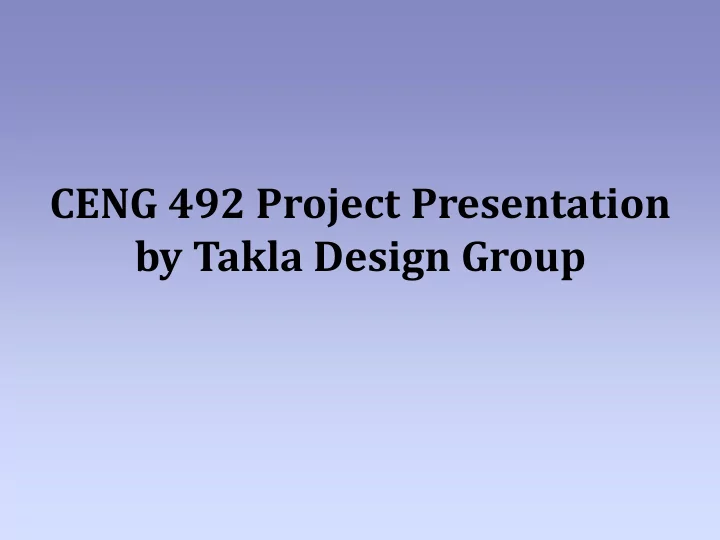

CENG 492 Project Presentation by Takla Design Group
Project : Trade Center • An android application • Alows users to trade, sell and share items • Similar applications out there in the market (Passage, Semt, etc.) • Our uniqueness lies within the principle we share.
Similarities between these apps and Trade Center • Same basic idea: A platform in which items can be sold or traded. • Being location based (GPS information is used) • Users can see items that are near them • Trading and selling options for the items.
Differences, and Our Approach - Apps out there, all have static approaches - Not enough functionalities, or interactions with users - This kind of approach pushes user out of the picture - Our biggest difference; a dynamic approach - An easier-to-use app with more functionality - User at the center
Dynamic Functionalities
Dynamic Functionalities - Cont’d ● Instant messaging: Contact ● with an item's owner instantly • Addresses: Users can store and specify addresses upon an item upload (item has the address specified by user) • A UI demonstration with some tabs from the application:
Tools Used in the Project
Project Structure ● Architecture Diagram
Project Structure ● RESTful architecture is being used ● Client and server sides are separate and does not know about each other ● Communication between front-end and back-end is provided by HTTP requests/responses ● JSON is preferred as the markup language
Front-End Development ● Android Studio as IDE ● Java as programming language ● Windows as OS ● Google Cloud Messaging (GCM) for Instant Messaging and Google Maps API for modules which require user's location ● Gradle is being used for build system
Front-End Development ● Application mostly advances by state transitions ● About 30-35 classes ● Fragments are being used for Messenger module, rest is mostly Intents ● User presses buttons or other clickable widgets in order to switch between these Intents (or Fragments) ● ListView structure for displaying images, Navigation Drawer for User Profile
Back-End Development ● Amazon EC2 Web Hosting as Infrastructure ● Node.js for handling requests and interacting with DB ● MongoDB for database management ● Mainly used NPMs (Node Package Modules): Mongoose, ExpressJS , Forever, Connect, BodyParser, Crypto (and etc.) ● Linux as OS
Back-end Development ● One executable file --> app.js ● Major module dependencies, configuration and routing requirements done in app.js ● One router file --> routes.js ● It is for handling requests/responses and their related datum with respective functions ● About 20 functions at the bottom layer (login, register, item upload, send message etc.) ● They interact with DB, send responses to routes.js
Conclusion • A shared idea, but different approaches • Aiming for user convenience • Interaction and dynamicity is the key • User in the center • A simpler and more compact UI • That's what Trade Center is all about!!!
Recommend
More recommend